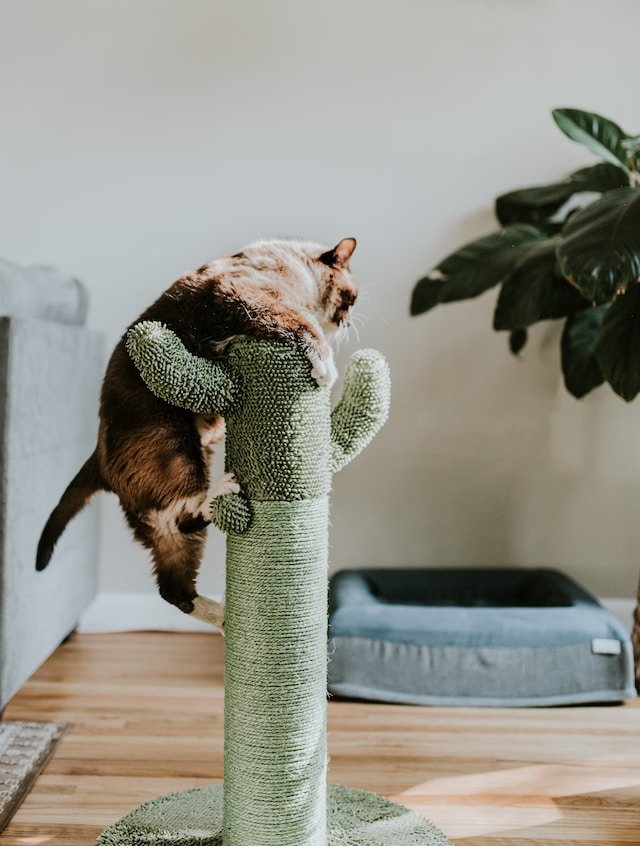The Scoop on Eco-Friendly Cat Litter: A Guide to Happy Cats and a Happier Planet
let’s talk about something that’s on every cat parent’s mind – the mysterious world of cat litter. But we’re not just delving into any cat litter; we’re exploring the realm of eco-friendly options. Join me on this exploration of finding the purrfect balance between a happy cat and a happier planet.
The Traditional Litter Conundrum
The cat litter aisle in the pet store can be overwhelming, to say the least. Clumping, non-clumping, silica gel, clay-based – the choices seem endless. But as we aim for a lifestyle that treads lightly on the planet, it’s time to reconsider the impact of our litter choices.
Enter: Eco-Friendly Cat Litter
I recently made the switch to an eco-friendly cat litter, and let me tell you, it was a game-changer. The decision wasn’t just about being environmentally conscious; it was also about creating a healthier and happier environment for my cat, Mr. Whiskers.
Understanding Eco-Friendly Cat Litter
So, what makes cat litter eco-friendly? Let’s break it down:
- Biodegradable Materials: Traditional cat litters often use clay, which is not renewable. Eco-friendly options use materials like corn, wheat, pine, or recycled newspaper. These materials are not only sustainable but also biodegradable.
- Low Environmental Impact: Eco-friendly cat litters typically have a lower environmental impact compared to their clay counterparts. They’re produced with a focus on reducing carbon footprint and minimizing resource use.
- No Harmful Additives: Many conventional litters contain added fragrances and chemicals. Eco-friendly alternatives skip these additives, ensuring a healthier living environment for your cat and less pollution for the planet.
My Experience with Eco-Friendly Cat Litter
I opted for a corn-based cat litter, and it was like a breath of fresh air—literally. Traditional litters often come with a cloud of dust when poured, but the eco-friendly option was virtually dust-free. This not only made the environment cleaner but also reduced the risk of respiratory issues for both me and Mr. Whiskers.
The clumping ability of the corn-based litter was impressive, making scooping a breeze. And here’s the kicker – it’s flushable! Just make sure to check with your local wastewater regulations before you start flushing.
Comparing Eco-Friendly Options
- Wheat-Based Litter: This type of litter is known for its excellent clumping ability. It’s also flushable and compostable, making it a top choice for eco-conscious cat parents.
- Pine Pellet Litter: Made from compressed sawdust, this litter has natural odor-fighting properties. It’s biodegradable and can often be composted.
- Recycled Paper Litter: If you’re looking for a lightweight and low-dust option, recycled paper litter is a fantastic choice. It’s made from reclaimed paper products and is often biodegradable.
- Bamboo-Based Litter: Bamboo is a fast-growing and renewable resource. Litters made from bamboo are biodegradable and have excellent odor control properties.
Making the Transition: Tips and Tricks
Switching cat litters can be a bit tricky, as cats can be quite particular about their toileting habits. Here are some tips based on my experience:
- Gradual Transition: Mix the new litter with the old one in increasing proportions over several days. This helps your cat acclimate to the new texture and scent.
- Observe and Adapt: Keep an eye on your cat’s behavior during the transition. If they seem uneasy or avoid the litter box, you may need to adjust the ratio of old to new litter.
- Positive Reinforcement: Reward your cat with treats and affection when they use the new litter successfully. Positive reinforcement goes a long way in making the transition smoother.
- Patience is Key: Cats are creatures of habit, and change can be unsettling. Be patient and allow your cat the time they need to adjust.
Eco-Friendly and Cat-Approved
One of the significant advantages of eco-friendly cat litter is that it often comes with natural odor control properties. Cats appreciate a clean environment, and so do we. I noticed a considerable reduction in odors compared to the clay-based litter I used before.
Moreover, knowing that I’m making a choice that benefits the environment adds an extra layer of satisfaction. It’s a small yet impactful change that collectively contributes to a healthier planet.
Conclusion: A Lighter Pawprint for a Brighter Future
Choosing an eco-friendly cat litter isn’t just a trend; it’s a conscious decision towards creating a sustainable and compassionate lifestyle for both you and your feline companion. The market is evolving, offering a plethora of options that cater to different preferences and priorities.
As cat parents, we have the power to make choices that align with our values. By opting for eco-friendly cat litter, we’re not only providing the best for our cats but also leaving a lighter pawprint on the Earth. So, here’s to a cleaner, greener, and happier future for both our cats and our planet!




